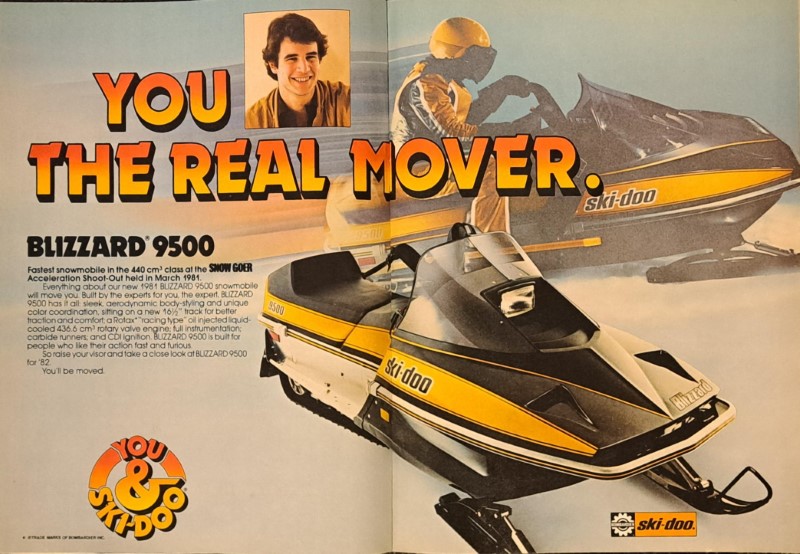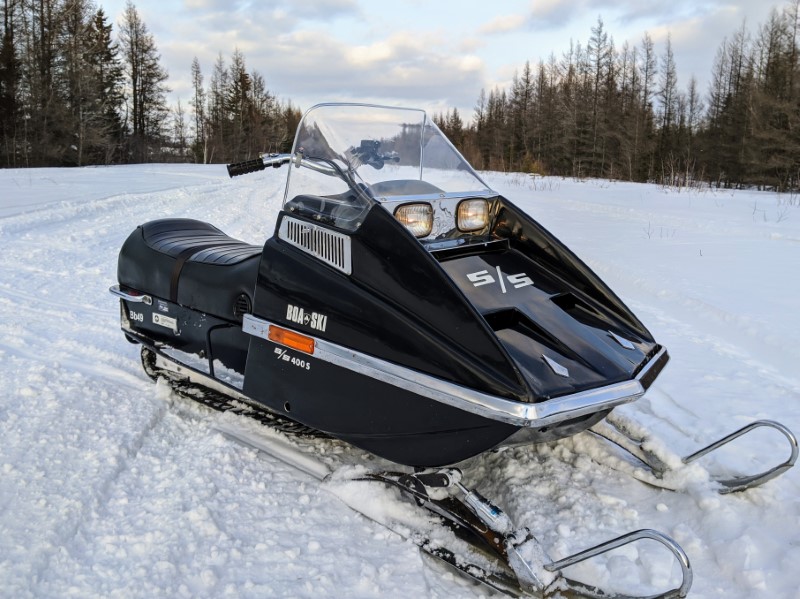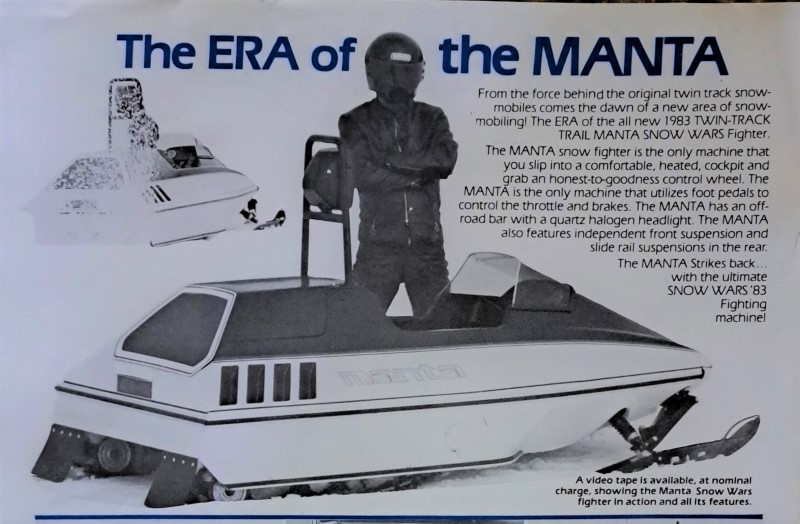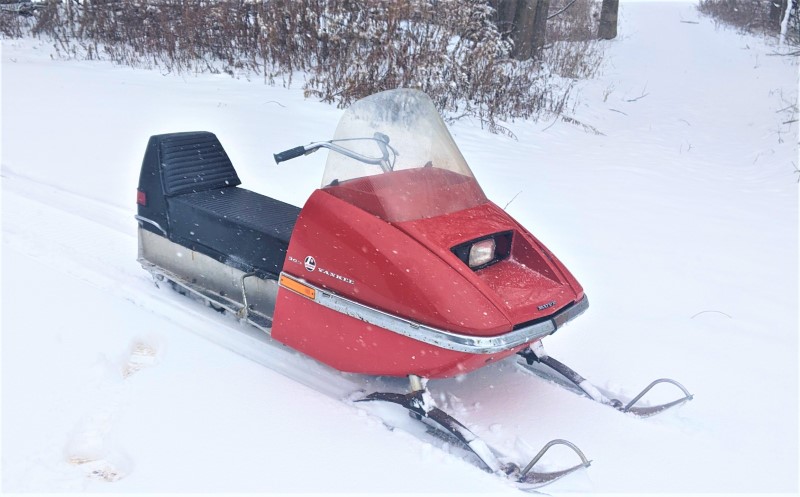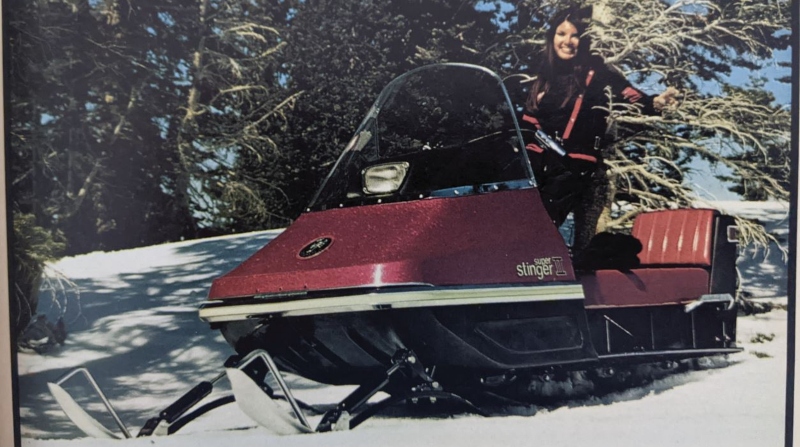 It’s our opinion that the 1990s will continue to be the age of “add-ons” for active snowmobilers. These days, you can equip your sled with a variety of creature comfort items, like handwarmers, thumbwarmers, adjustable backrest, foot warmers, electric start, and reverse gear. State of the art helmet communicators make it possible to communicate to your riding buddies on the trail. Electric face shields prevent fogging problems. So, what’s next? How about a cellular phone for your snowmobile?
It’s our opinion that the 1990s will continue to be the age of “add-ons” for active snowmobilers. These days, you can equip your sled with a variety of creature comfort items, like handwarmers, thumbwarmers, adjustable backrest, foot warmers, electric start, and reverse gear. State of the art helmet communicators make it possible to communicate to your riding buddies on the trail. Electric face shields prevent fogging problems. So, what’s next? How about a cellular phone for your snowmobile?
It may sound crazy, but so did the prospect of equipping your automobile with a phone not all that long ago. As more and more cellular systems spring up across the Snowbelt, a “sled phone” is becoming more of a possibility for snowmobilers who enjoy going out on the edge every now and then. With the cooperation of Cellular One and Motorola, and an assist from SNOW GOER Consumer Test Panel member Don Wineland of Prior Lake, Minnesota, we set out to see if and how it could be done… and at what cost.
Buying a cellular phone for your sled is like buying a sled itself.., you have a wide price range to select from. You might be able to find a phone for $99 at a local Sears or JC Penney store. And, you can pay up to $899 if you buy from phone companies like Cellular One or U.S. West. If you get the economy model, be sure to check on the battery.
Most inexpensive phones do not come with the battery and you’ll need to buy that separate, meaning your cost just goes up anyway. Most of the more expensive phones come complete with battery. And, like anything else, the more expensive phones tend to give you better service and last longer. Be sure you buy a phone with a full three watts of power, which is the max for cellular units. Considering the fact that you’ll often be using your phone out on the trails, surrounded by trees, you will need all of the power you can get.
Aside from the initial cost of purchasing the cellular unit, there is your monthly charge, similar to your telephone at home. You will have to buy a “service.” Since you will be using the phone for 3-4 months max, try to purchase a service for that length of time. If you have to buy a six month or 12 month service, you can take the phone off your sled and use it in your car the rest of the year to get your money’s worth. This service charge can range from $9.95 to $29.95 depending on where you live. The $9.95 charge is likely a standard charge, and you’ll also have to pay a per-minute charge on use of the phone (anywhere from 16 to 38 cents), while the $29.95 charge includes so many minutes of calls per month. Bottom line, when shopping for the phone and the service, know what you’re getting.

Installation Tips
According to Wineland, you should be able to complete the job of installing your cellular phone in 2-3 hours, depending how handy you are. The first step is to make sure you have all the parts: telephone handset, handset mounting bracket, transceiver (radio), battery, antenna and wiring. Each machine may require something different and everyone will have his own ideas and preferences, but we recommend mounting the handset to the cowling, just to the right of the instrument pod on most machines. This can be done by bolting a universal bracket to the fiberglass. A good bracket will keep the handset from bouncing around. By mounting it on the right side, you will need to take your hand off the gas to use the phone. We do not recommend talking on the phone while driving the sled (nor will it work in most instances due to engine interference).
It is possible to mount the transceiver under the hood in various spots, but we decided to put ours in the rear storage compartment. There is too much pounding under the hood, plus you can damage the unit if it is too close to the exhaust system or the engine. A good shock-mount along with some foam padding inside the storage compartment will work best. The battery should also go in the rear storage compartment with the transceiver. The next step is to mount the antenna on the rear grab bar by drilling a couple of holes, running the wire from the antenna inside the rear storage to the transceiver. Again, there are many places to mount the antenna on your sled, including the windshield, but we felt mounting it on the rear of the machine was best because we could mount it higher (for better reception) without obstructing the driver’s view. The next step is to run the wiring from the transceiver and battery to the handset. It is easy to run the wiring under the seat of the sled.
Two options to consider before you test it out: you might want to put a light on the instrument pod that will flash whenever someone is calling you on the phone. This will take a little more work, but would be a nice touch if you want to receive calls as well as make them. Also, we recommend you run a cable from the phone battery to the sled battery. You don’t have to do this… you could just operate off the phone battery, but it will eventually drain and you’ll be “down” until you can recharge it. If you hook up to the sled battery, the phone system will draw from its own battery first, but when that gets low, it will continue to operate off the sled’s battery, while the phone battery is recharging.
Remember, you can only use a cellular phone in areas that have cellular service. This list of areas is growing year by year, making sled phones something we just might see more of down the road. Some obvious applications for such an add-on include: calling to let someone know you are having sled trouble; calling ahead to make meal reservations; calling the motel to let them know you are running late; calling a nearby dealership to see if they have a part you need, or to see how late they will be open. Use your imagination. And remember, you heard about it first in SNOW GOER.

